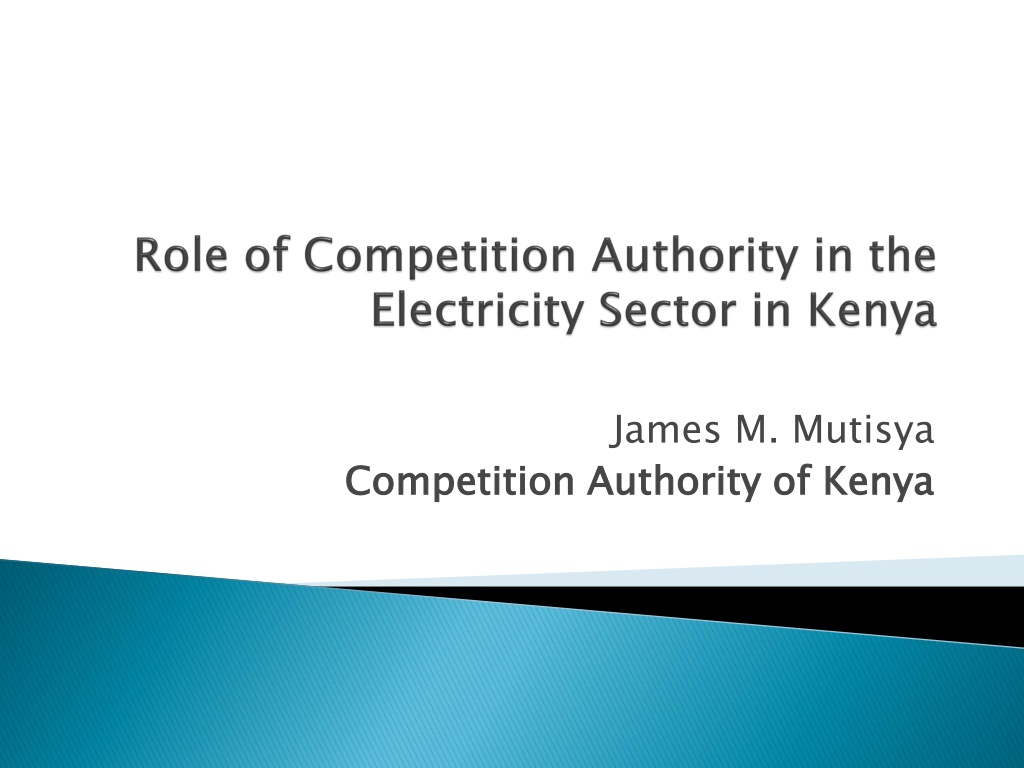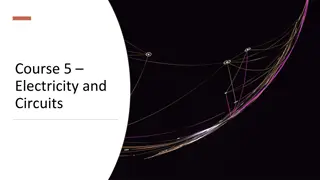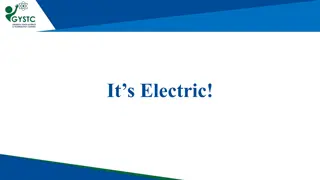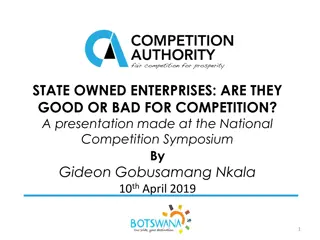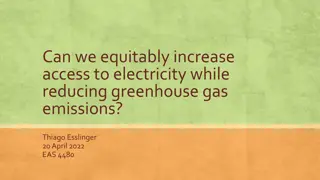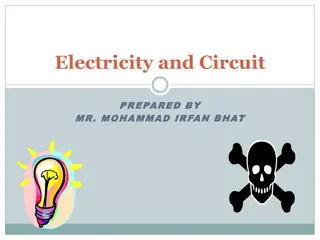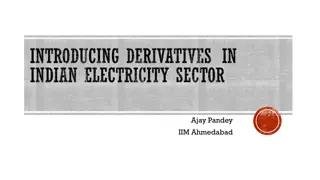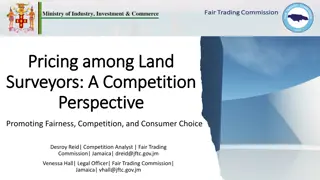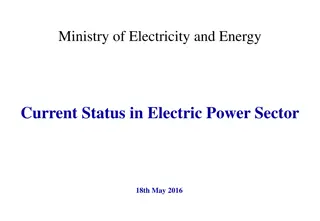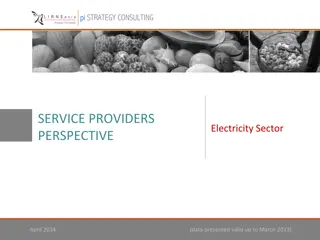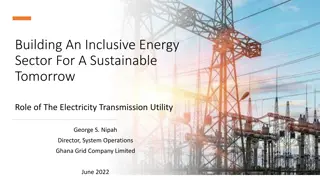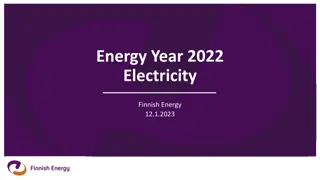Role of Competition Authority in Kenya's Electricity Sector
Competition Authority of Kenya (CAK) plays a pivotal role in promoting competition, protecting consumers, and ensuring efficient market conduct in the electricity sector. By enforcing regulations and prohibiting anti-competitive practices, CAK enhances consumer welfare and stimulates innovation and development.
Download Presentation

Please find below an Image/Link to download the presentation.
The content on the website is provided AS IS for your information and personal use only. It may not be sold, licensed, or shared on other websites without obtaining consent from the author.If you encounter any issues during the download, it is possible that the publisher has removed the file from their server.
You are allowed to download the files provided on this website for personal or commercial use, subject to the condition that they are used lawfully. All files are the property of their respective owners.
The content on the website is provided AS IS for your information and personal use only. It may not be sold, licensed, or shared on other websites without obtaining consent from the author.
E N D
Presentation Transcript
James M. Mutisya Competition Authority of Kenya Competition Authority of Kenya
Introduction Role of CAK in the electricity sector reforms in Kenya The role of CAK in electricity subsector regulation 2
Introduction The Competition Authority of Kenya is created under section 7of the Competition Act no 12 of 2010. The mandate of the Authority is to promote and safeguard competition in the national economy and protect consumers from unfair and misleading market conduct. 3
Competition policy and consumer policy aim at the enhancement of consumer welfare. Thus, competition policy and consumer policy have the same objective; they have a common, overarching goal enhancement of consumer welfare through efficient working of markets. 4
Ensures consumers get goods and service at the lowest price possible as firms strive to gain market shares or consolidate their market positions; Leads to increased consumer choice; Leads to innovation and therefore development as firms compete; It leads to optimal resource allocation i.e. combinations of goods and services that consumers require are produced in the right quantities at minimum feasible cost. 5
By prohibiting certain types of conduct that interfere with competition restrictive agreements especially cartels, harmful conduct by a monopolist or dominant firm and anti-competitive mergers. Ensure consumer protection by prohibiting false and misleading representation, unconscionable conduct, sub-standard goods and services . Through prescribing service standards and obligations. 6
In certain markets /industries e.g. natural monopolies competition is not feasible e.g. electricity transmission. In these markets one firm supplies goods or services at a lower cost than two or more firms. In markets where competition is unlikely to produce efficient outcome consumer welfare is assured through price and service regulation (market regulation). ERC is playing this role in the electricity sector. 7
The relationship of the Competition Authority and sector regulators is defined in section 5 and section 9 of the Competition Act. Section 5 gives the Competition Authority oversight function over competition and consumer protection matters in the economy. To address jurisdictional conflict, the Authority is supposed to negotiate Mou s with sector regulators to provide for procedures for management of areas of concurrent jurisdiction. Cooperation and exchange of information 8
In terms of section 9 (h-k) the Authority is mandated to review government programmes, policies and laws to assess their effect on competition and consumer protection. The Authority is also empowered to participate in deliberations and proceedings of government, government commissions, regulatory authorities and other bodies in relation to competition and consumer protection. 9
Part VI, sections 55 to 70 of the Competition Act deal with consumer welfare/protection. section 55 prohibits false and misleading representation of goods or services. Examples of this conduct are given in section55 (a) and (b). This section applies to advertisements and promotion activities of participants in the electricity sector. Section 56 covers unconscionable (beyond what is reasonable) conduct by firms. 10
Examples of unconscionable conduct include requiring consumers to comply with unnecessary conditions, whether a consumer is able to understand contracts, use of undue pressure to sell a product or service, imposition of unilateral charges or fees by firms. Under this section suppliers of electricity are required to use plain language in contract documents. 11
They are obligated to inform consumers of all charges and fees, whatever name called or described before the provision of a service (section 56(3) (4) of the Competition Act). Supply of unsafe goods i.e. goods that do not meet prescribed safety standards is prohibited ( section 59). This applies to suppliers of power cables and accessories. 12
Suppliers of goods will be required to adhere to product information standards. These will include disclosure of information relating to the performance, composition, contents, methods of manufacture or processing design among others. Under section 61 the Authority has powers to require suppliers to recall from the market goods that are likely to cause a) injury to consumers; b) that do not meet prescribed safety standard ; and C) goods being investigated by the Authority as specified in section 58. 13
A person suffering loss as a result of consuming defective goods is entitled to compensation through court action. The Authority has powers under section 68 to refer complaints to specialized agencies of the government. Penalties for violating this section include maximum jail term of five years or a maximum fine of ten million shillings or both. 14
The role of CAK in regulation of the electricity is as stipulated in section 5 and 9 of the Competition Act. The Authority cooperates with the Energy Sector Regulator to address competition issues in the energy sector. 15
